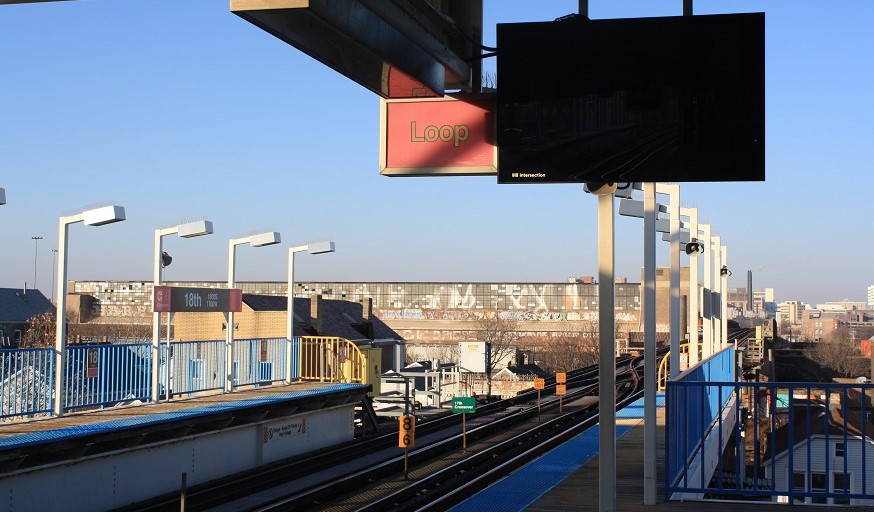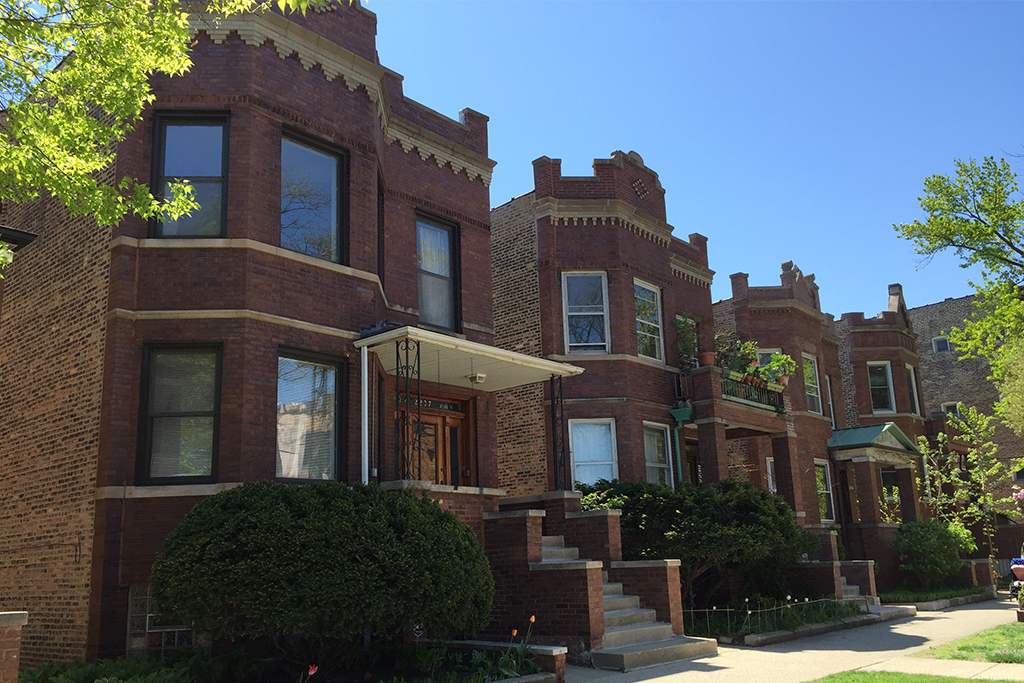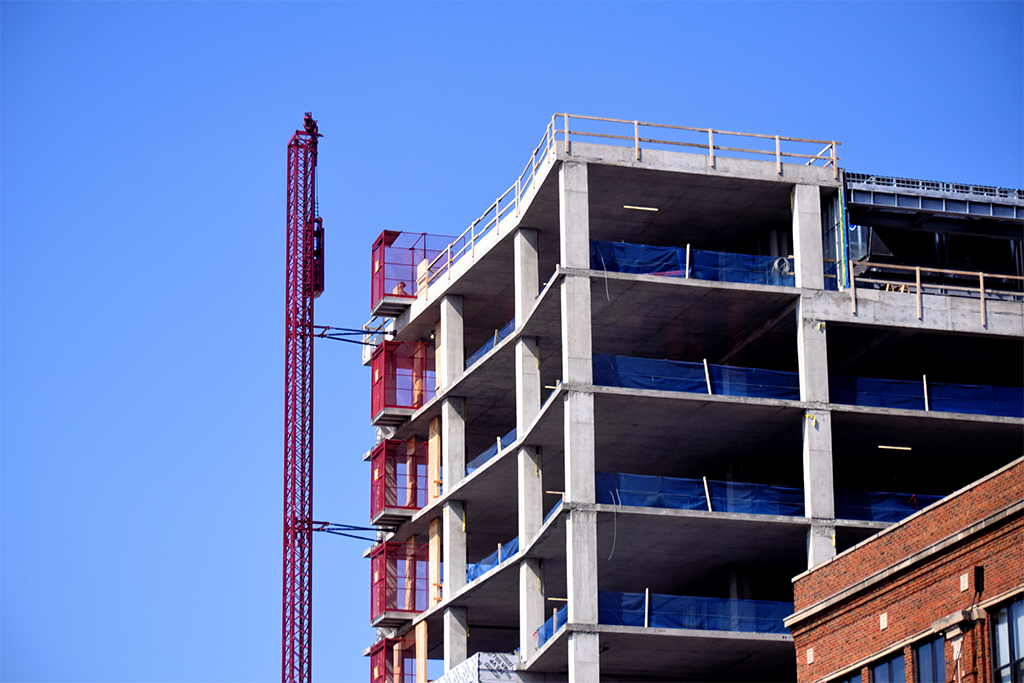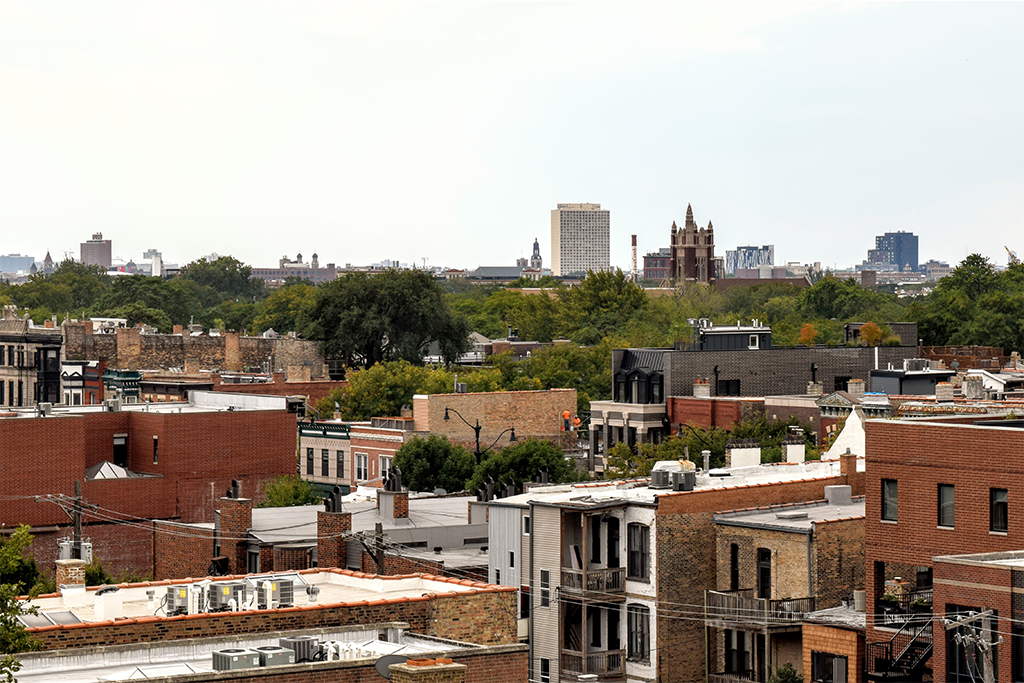The COVID-19 pandemic’s public health and economic impacts have disproportionately impacted communities of color and low-income communities. As the impacts of the pandemic continue to unfold, community stakeholders and policymakers need information to inform the development and targeting of policies that prevent widening racial and economic disparities.
In response, the Annie E. Casey Foundation and the Robert Wood Johnson Foundation collaborated with the Urban Institute’s National Neighborhood Indicators Partnership to make funding opportunities available to support organizations across the country and help ensure community leaders had the local data and community information needed for equitable COVID-19 response and recovery. As part of these initiatives, the Institute for Housing Studies (IHS) collaborated with Chicago organizations to engage stakeholders and residents in Chicago neighborhoods that saw disproportionate impacts from the pandemic. Read more about these collaborations below.
About the Collaboration
During the first few months of the pandemic, IHS published analyses and data products exploring the potential housing and economic impacts of the COVID-19 public health crisis on Chicago communities and individuals. Building on this work, IHS collaborated with a variety of local organizations and community members on two projects that sought to inform how organizations and stakeholders can remain responsive to the emerging challenges and impacts from the COVID-19 pandemic.
Communities United (CU) - Communities United is a grassroots, community-based organization that develops leadership among youth and families in Albany Park, Austin, Belmont Cragin, Roseland, and West Ridge. One of CU’s initiatives includes Renters Organizing Ourselves to Stay (ROOTs), an affordable housing preservation strategy that works with local partners to acquire foreclosed 2 to 4 unit rental buildings, keep them affordable, and stem the displacement of low-income families across Chicago.
With funding from the Annie E. Casey Foundation, IHS collaborated with CU to engage youth and families in CU's five core Chicago community areas to identify core housing, economic, and community development challenges that emerged or became more pronounced as a result of the COVID-19 pandemic. Since the start of the pandemic, CU’s core community areas were among the hardest hit neighborhoods in Chicago. A large share of residents in CU communities were more likely to be employed in occupations at-risk of COVID-related layoffs and subsequently, are at greater risk of eviction and housing insecurity.

Above: Communities United organize against evictions. (Source: Communities United)
Elevated Chicago – Elevated Chicago is collaborative that uses equitable transit-oriented development (ETOD) strategies to advance community priorities around racial equity, arts and culture, climate change resiliency, and public health in several Chicago neighborhoods. As part of the ongoing Healthy Chicago Seed Grant Program, the Chicago Department of Public Health and Public Health Institute of Metropolitan Chicago (PHIMC) provided six community-based organizations with funding and support to lead locally-driven activities and solutions aimed at improving walkability in Elevated Chicago eHub communities (half mile radius around six CTA train stations). Participating Seed Grantees included Foundation for Homan Square, Garfield Park Community Council, Latinos Progresando, Logan Square Neighborhood Association, North Lawndale Community Coordinating Council, and South East Chicago Commission.
For communities of color in close proximity to transit stations, the economic downturn resulted in declining levels of walkability and accessibility due to small business closures, significant cuts in public transit service, and more. In partnership with Elevated Chicago, PHIMC, and Rudd Resources, and funded by the Robert Wood Johnson Foundation, IHS tapped into the ongoing work of Seed Grantees and walkability stakeholders to identify data needs that have emerged during the pandemic and assist in the development of community-driven narratives of walkability.

Left: Community members help assist beautification efforts in Washington Park. (Source: South East Chicago Commission, Washington Park Chamber of Commerce, 2020) Right: North Lawndale community members engage in a neighborhood walkability assessment. (Source: North Lawndale Community Coordinating Council, School of the Art Institute of Chicago Walkability Assessment, 2019)
The Community Engagement Process
During both of these projects, IHS and project partners sought to learn how 1) place-based impacts of the COVID-19 pandemic were unfolding at the neighborhood level, 2) community-based organizations, practitioners, and policymakers were attempting to remain responsive to emerging community needs in the short-term while working towards long-term goals, and 3) community challenges and priorities could be communicated through data and storytelling to promote equitable investment. To gather information on these issues, IHS worked with project partners to engage community residents and other stakeholders. Community engagement activities included:
Virtual convenings of stakeholders and community organizations. CU and IHS convened CU’s youth organizers and leaders, key housing stakeholders, and a youth advisory group to discuss how the impacts of COVID-19 were unfolding in their communities and the ways data can support their organizing and capacity-building efforts. In partnership with Elevated Chicago, PHIMC, and Rudd Resources, IHS helped convene Seed Grantees and practitioners implementing walkability initiatives to discuss how their ongoing work has been impacted by emerging community needs and changing neighborhood conditions as a result of the pandemic.
Surveys to gauge challenges and priorities of residents and community members. For these partnerships, two surveys in English and Spanish were disseminated to identify key challenges and emerging priorities as a result of the COVID-19 pandemic. With the help of CU’s youth organizers, an online survey was distributed to community members in CU’s five core communities to identify key housing and economic challenges facing youth and their families. With the help of Healthy Chicago Seed Grantees, an online survey was shared with community members that live, work, and visit neighborhoods surrounding Elevated Chicago eHubs to identify walkability barriers, perceptions, and shifting priorities.
What We Learned
As a result of the COVID-19 pandemic, community members are grappling with the heightened impacts of ongoing challenges and highlight the importance of neighborhood assets. Survey findings illustrate that youth and their families in CU’s core communities face the impacts of ongoing gentrification- and disinvestment-related pressures in their communities that have been amplified by the pandemic, including pronounced housing and economic insecurity, mental health challenges, and community-wide impacts of violence. In Elevated Chicago eHub communities, residents are experiencing declining levels of walkability due to factors such as small business closures, challenges with pedestrian safety and traffic, and lack of access to green spaces.
How do community members and stakeholders see their communities emerging from the economic and public health impacts of the COVID-19 pandemic? In CU’s core communities, youth and their families expressed a need for greater affordable housing options, employment opportunities, and community resources. While the pandemic has changed walking behavior, Elevated Chicago stakeholders identified key priorities to improve walkability to and from CTA train stations based on neighborhood-specific conditions. For example, stakeholders in eHubs experiencing affordability pressures expressed preventing small business closures while stakeholders in eHubs experiencing disinvestment hoped to attract new neighborhood investment that is accessible by walking.
Tapping into the expertise of community-based organizations, stakeholders, and local residents can foster community-informed programs and initiatives. As a grassroots organization, the perspectives and lived experiences of Black, Latinx, and immigrant youth and families in CU’s core communities directly inform CU programs and campaigns. CU’s Rethinking Safety Campaign was developed by youth directly impacted by gentrification and disinvestment in their communities seeking to improve access to mental health services and community resources, a critical issue expressed during the community engagement process. For Elevated Chicago partners, information on changing community walkability needs and perceptions surrounding eHubs can help policymakers and practitioners develop more tailored strategies and inform Seed Grantees’ neighborhood-level walkability initiatives.
Accessible data can help identify community needs and advocate for additional resources. Data will play an important role to guide equitable recovery from the COVID-19 pandemic for Chicago communities by identifying neighborhood-level challenges, helping community-based organizations advocate for resources, and allowing stakeholders to evaluate the impact and success of programs and investments.
Using takeaways from the community engagement process and survey findings, IHS developed data products to aid CU and Elevated Chicago with their ongoing initiatives and laid the groundwork for future data development. For CU, IHS created a data dashboard of housing, socioeconomic, and COVID-19 related vulnerabilities to support their community outreach and ongoing campaigns. To support future walkability investments, IHS summarized key data sources and methods practitioners and researchers can use to assess and measure neighborhood walkability using local Chicago and national data sources and resources. This preliminary framework will be used to guide additional development of data indicators that measure and track neighborhood walkability.
Community-driven narratives can guide equitable place-based investments. Another important theme that emerged during the community engagement process emphasized that dominant narratives in the media do not always reflect the experiences of local residents and risk overlooking existing neighborhood assets. To link day-to-day experiences with data, Rudd Resources and project partners recorded narrated walks of community members from Logan Square’s Blue Line eHub, a neighborhood experiencing displacement by gentrification, and Washington Park’s Green Line South eHub, a neighborhood experiencing displacement by disinvestment. These narrated walk videos used key data points to underscore community narratives. The goal of these walks was to provide community perspectives that contextualize place-based walkability barriers and reframe opportunities for future investment.
Above: David Anthony Geary, Chicago artist and Washington Park resident, gives a walking tour of current conditions and community assets surrounding Elevated Chicago's Green Line South eHubs. (Source: Rudd Resources, Elevated Chicago, 2020)
What's Next
Collaborations are critical to IHS’s applied research model by connecting our work to local policy and practice. Community engagement shapes IHS’s data development and research so that it better reflects community specific challenges and priorities.
IHS will continue to work with Elevated Chicago partners and Communities United in the coming year. IHS, Elevated Chicago, PHIMC, and Rudd Resources presented project findings to Elevated Chicago’s Leadership Council to spark conversations about how to advance ETOD and its policy plan and improve pedestrian infrastructure as communities emerge from the COVID-19 pandemic. IHS and CU will continue to collaborate by using project findings and resources to conduct community outreach and document the housing experiences of Black and Brown communities across CU's core community areas.
To keep up-to-date on future updates, new analyses, and blog posts and information about our work, sign up to receive our emails, follow us on Twitter, like us on Facebook, or follow us on LinkedIn.






